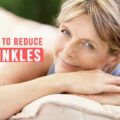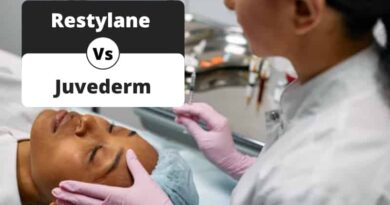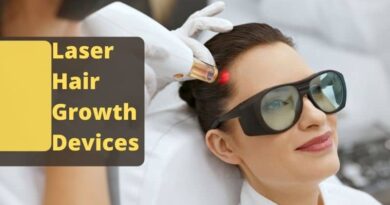A Guide to Dissecting Your Skincare Product Labels
Skincare product labels can reveal a lot about the product — but only if you know what you’re looking for, that is. The marketing copy may sound fantastic, but the ingredient label will reveal whether or not the product actually lives up to its claims. Since more and more skincare consumers are interested in ingredient transparency, we’ve put together this guide to help you dissect skincare labels and make an informed choice. Without further ado, here’s what you need to know about understanding skincare product labels:
Table of Contents
Decoding Ingredient Lists
Typically, natural skin care ingredients are listed on the label in the order of greatest concentration to lowest concentration. The higher an ingredient is listed on the label, the more of that ingredient is in the product. If you know that you tolerate certain ingredients in small amounts but not large amounts, look at where they fall on the label before making a final purchasing decision. You might do well with a product that lists fragrance as the last ingredient, but struggle to tolerate a product where fragrance is one of the top five ingredients.
Companies typically aren’t required to disclose the percentage of ingredients in their formulations except for certain active ingredients such as salicylic acid. This concentration information is helpful when deciding between products: A serum with 2% salicylic acid will be more powerful (but potentially more irritating) than a serum with 0.5% salicylic acid. Pay attention to this concentration when shopping so you don’t accidently grab a product that is stronger than you want.
Sometimes you only need a small amount of an ingredient for it to be effective. Take retinol for example, which can be effective in concentrations as low as 0.01%. However, at other times companies put a tiny amount of an ingredient in a product so they can use it in marketing claims, but it’s not really enough to make a difference. If a product advertises a certain ingredient heavily, check the label to see how high that ingredient is listed.
Understanding Key Terms and Claims
Unfortunately, many common skincare terms — including all natural, clean, and sustainable — are not regulated by the FDA, so any brand can technically apply that label to their skincare products. Some brands truly use these as accurate descriptors of their products, while others are simply trying to hop on the marketing bandwagon even though their products aren’t natural or organic. Learning to read a skincare label will help you figure out if these claims are legitimate or if they’re just marketing speak. Some terms to be familiar with are:
- Natural: This typically refers to products that contain ingredients derived from natural sources, as opposed to synthetic ingredients chemically formulated in a lab.
- Clean: This typically refers to products that don’t contain a list of ingredients that might be potentially harmful to either people and/or the environment; “clean” ingredients vary from brand to brand.
- Non-toxic or toxin-free: This typically refers to products that don’t contain ingredients that have potentially been linked to hormone disruption, cancer, and other negative health outcomes in humans.
- Sustainable or eco-friendly: This typically refers to products that are prioritizing the environments in some way. Some examples include reducing single-use plastic packaging and seeking to decrease the company’s carbon footprint.
- Green: This typically refers to products that feature clean and/or natural ingredients, and may also be sustainable or eco-friendly as well.
- Hypoallergenic: This typically refers to products that cause less of an allergic reaction than other similar products, but it’s not a medical designation or regulated by any government body.
- Non-comedogenic: This typically refers to products that don’t contain ingredients that can clog pores, such as lanolin and shea butter.

Learning About Certifications and Seals
In addition to key terms that aren’t regulated by any governing body, there are also some skincare certifications and seals that can only be used by companies that meet certain criteria. In some cases, the seal or certification is issued by an organization such as the FDA or Fair Trade USA, while others are self-selected by the company. Here are some ones that you should know:
- Cruelty-free: This term means that the final product or formulation has not been tested on animals. That being said, some cruelty-free products are still tested on animals at the ingredient level, so always double check what the company means when they say their product is cruelty-free.
- Vegan: This term means that the skincare product does not contain any ingredients that are animal byproducts; some examples include beeswax, honey, lanolin, squalene, carmine, and gelatin. Many vegan skincare products are also cruelty-free, but these terms aren’t interchangeable, so look for skincare that is labeled both vegan and cruelty-free.
- Organic: In order to be labeled organic by the USDA, a product must contain 95% ingredients that were created without the use of pesticides, fertilizers, and other synthetic materials. Brands with this certification will features the USDA logo on the packaging in addition to the term “organic,” so look out for that.
- Fair trade: This term means that the manufacturer has been vetted and approved by a fair trade certification body, most likely Fair Trade USA. Fair trade certified organizations meet a host of criteria, including no child labor and using sustainable production.
Finding the Right Ingredients for Your Skin Type
While natural skincare used to be a niche, thanks to new formulations and brand launches, now it’s easier than ever to find vegan and cruelty-skincare that fits your skin’s unique needs. Now sure what natural skincare ingredients are the right choice for your skin? Take this personalized skincare quiz to get recommendations just for you!
Recommended Articles:
Beauty Rituals Shared by Successful Women








